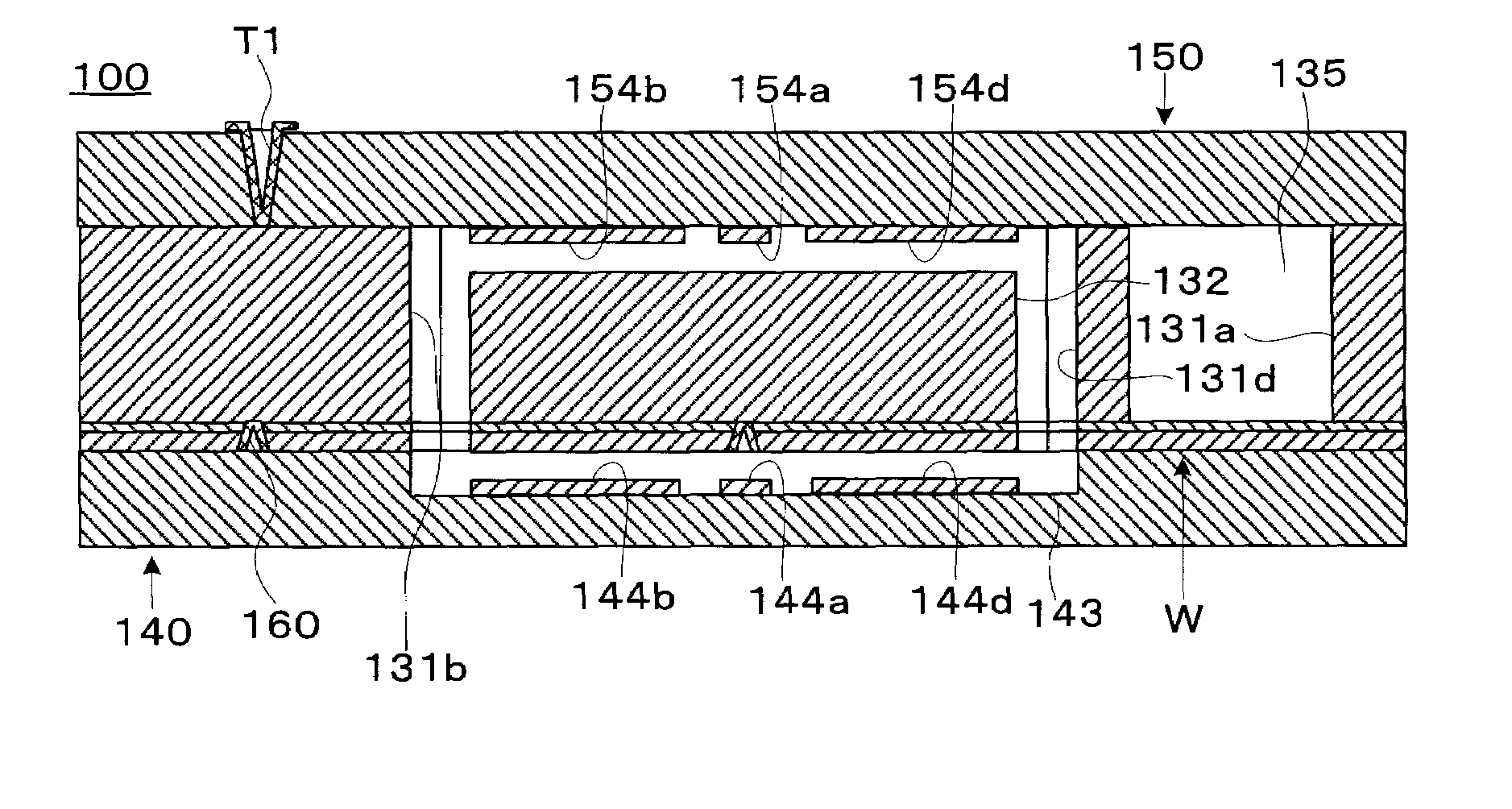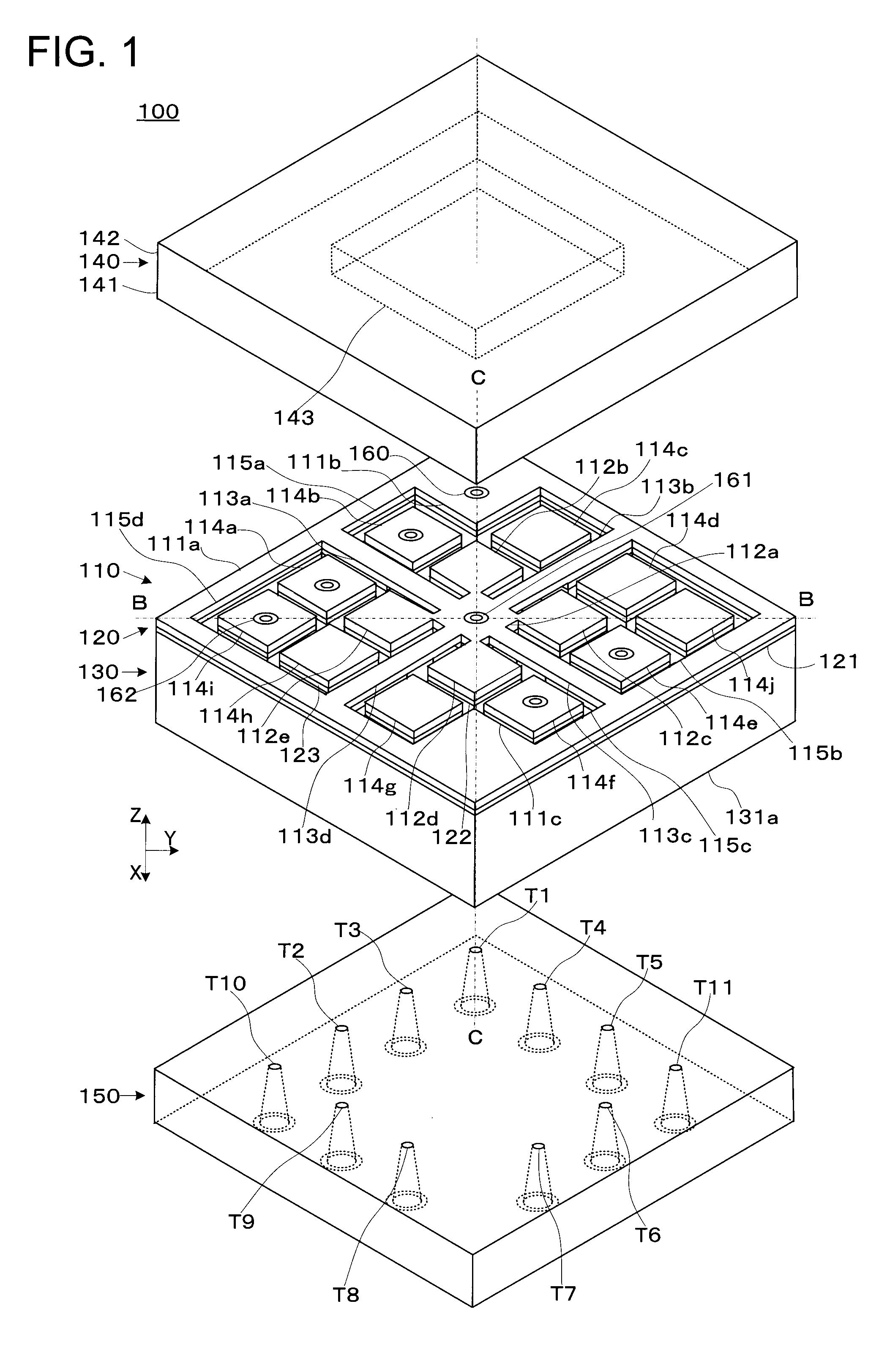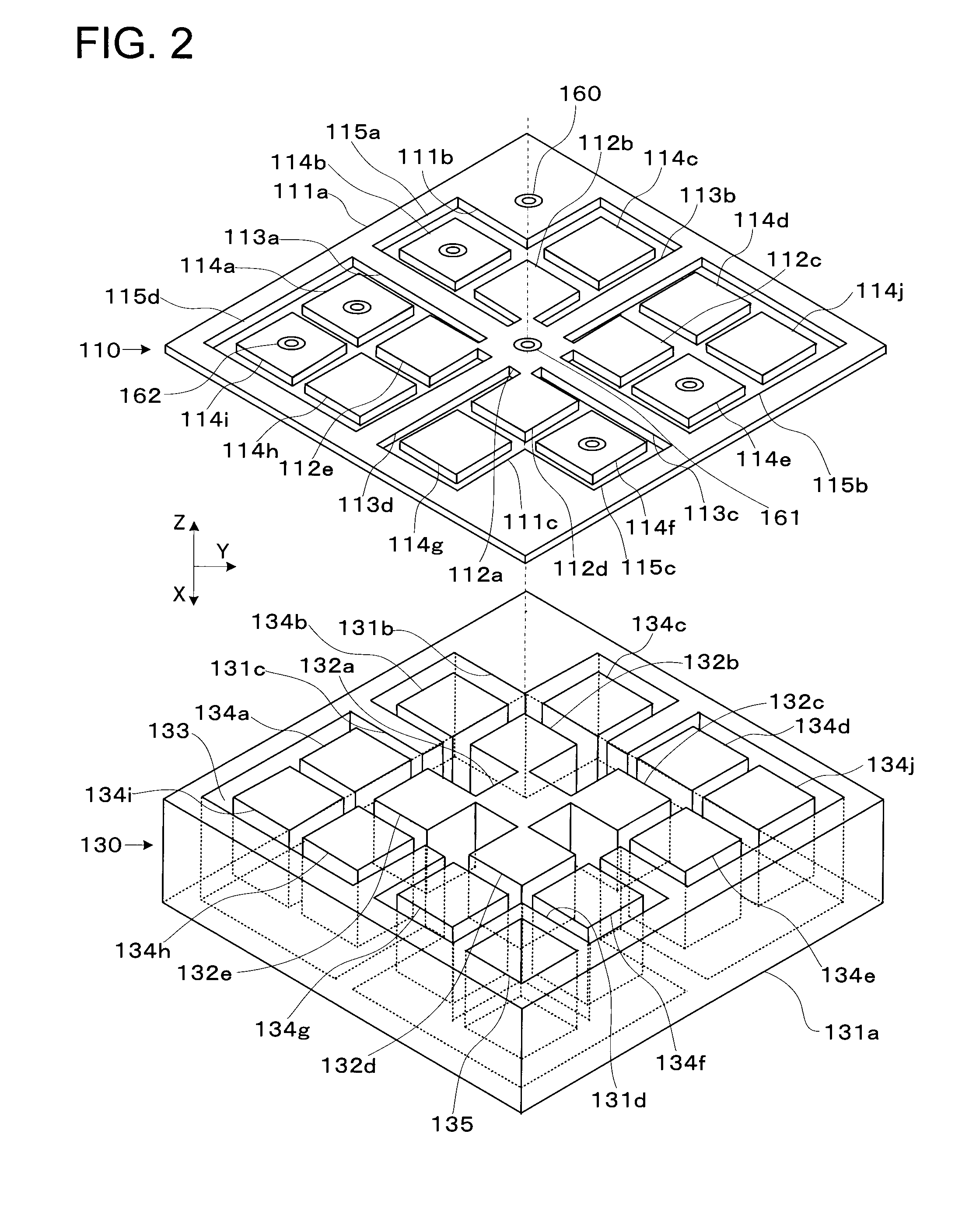Mechanical quantity sensor and method of manufacturing the same
a technology of mechanical quantity sensor and manufacturing method, which is applied in the direction of acceleration measurement using interia force, turn-sensitive devices, instruments, etc., can solve the problems of variation in characteristic among products and differences in capacitance values, and achieve the effect of reducing characteristic variation among products
- Summary
- Abstract
- Description
- Claims
- Application Information
AI Technical Summary
Benefits of technology
Problems solved by technology
Method used
Image
Examples
first embodiment
[0032]FIG. 1 is an exploded perspective view showing a state where a mechanical quantity sensor 100 is disassembled. The mechanical quantity sensor 100 has a first structure 110, a joining part 120, and a second structure 130 which are stacked on one another, a first base 140, and a second base 150. FIG. 2 is an exploded perspective view showing a state where part of the mechanical quantity sensor 100 (the first structure 110 and the second structure 130) is further disassembled. FIG. 3, FIG. 4, and FIG. 5 are top views of the first structure 110, the joining part 120, and the second structure 130 respectively. FIG. 6, FIG. 7, and FIG. 8 are a bottom view of the first base 140, a top view of the second base 150, and a bottom view of the second base 150 respectively. FIG. 9 and FIG. 10 are cross-sectional views of the mechanical quantity sensor 100 taken along B-B and C-C in FIG. 1 respectively.
[0033]The mechanical quantity sensor 100 in a stand-alone state or in combination with a c...
example
[0182]Experimental studies were conducted on the material forming the driving electrodes 144a, 154a and so on and the presence / absence of the generation of hillocks.
[0183]Concretely, an Nd-containing Al film was formed on a glass substrate and the presence / absence of the generation of hillocks due to heat treatment was confirmed. As the condition for the heat treatment, the temperature was set to 400° C. and the treatment time was set to one hour. An optical microscope was used to observe the presence / absence of hillocks.
[0184]When a content ratio of Nd is Oat % (pure Al) and 1.3 at %, the generation of hillocks was observed. On the other hand, when the content ratio of Nd is 2.0 at %, the generation of hillocks was not observed. It is inferred from this result that hillocks can be reduced when the content ratio of Nd is about 1.5 at % or higher.
[0185]When the content ratio of Nd was set to 2.0 at % and the treatment time was set to 30 minutes under varied temperatures of 200° C., 3...
PUM
 Login to View More
Login to View More Abstract
Description
Claims
Application Information
 Login to View More
Login to View More - R&D
- Intellectual Property
- Life Sciences
- Materials
- Tech Scout
- Unparalleled Data Quality
- Higher Quality Content
- 60% Fewer Hallucinations
Browse by: Latest US Patents, China's latest patents, Technical Efficacy Thesaurus, Application Domain, Technology Topic, Popular Technical Reports.
© 2025 PatSnap. All rights reserved.Legal|Privacy policy|Modern Slavery Act Transparency Statement|Sitemap|About US| Contact US: help@patsnap.com



